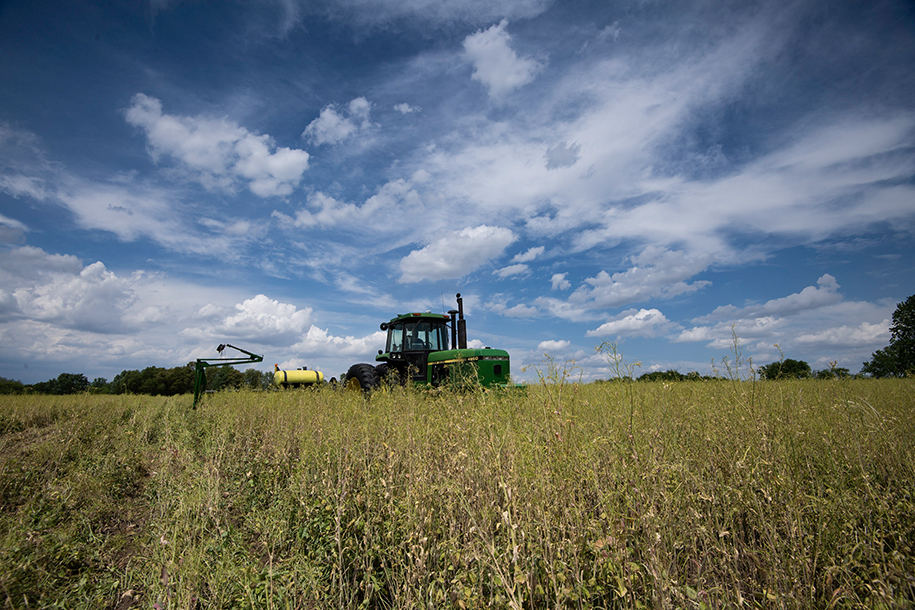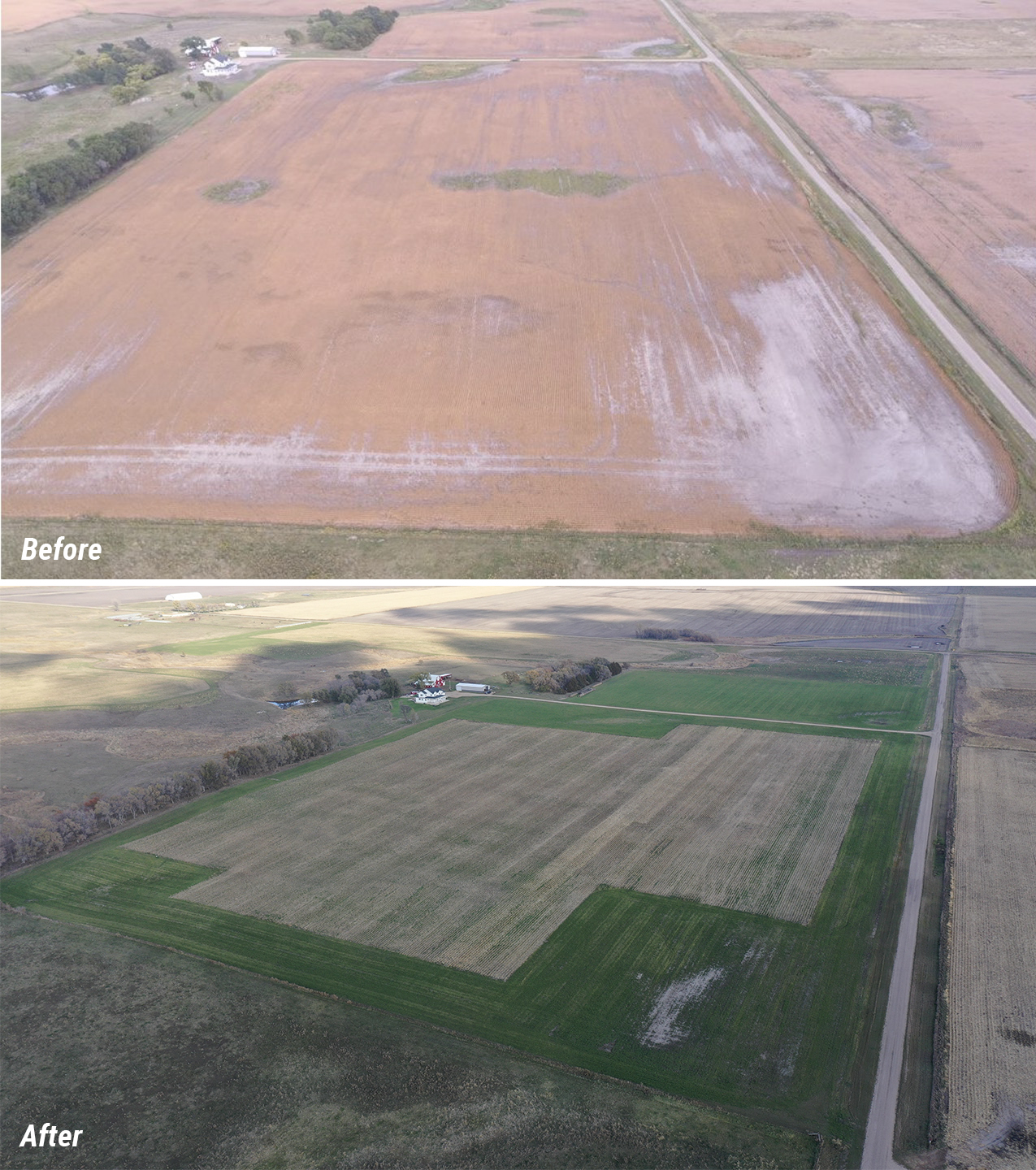
There is a lot of buzz about cover crops. But, they aren’t a fad. They also aren’t a one-size-fits-all solution. Instead, cover crops can be a powerful way to address real operational challenges when used strategically.
Technical Advisor and farmer Austin Knight explains, “Cover crops aren’t a trend – they are a tool. The key is making them work within your farming system, not against it.” That means fitting them into your operation in a way that adds value and supports your cash crops.
Cover crops can offer a variety of benefits for your land or for your livestock. For example:
- Reducing erosion – When rain or wind hit bare ground, it often runs off, taking topsoil with it. Cover crops help keep topsoil in place during a wind event and slow rainwater down, letting it soak in instead of washing away.
- Improving water holding capacity – When cover crops break down, they add organic matter to the soil. This improves soil structure and turns it into more of a sponge. Soils with higher organic matter can hold more water.
- Breaking up compaction – Cover crops, especially those with deep tap or fibrous roots, help break up compacted layers and leave behind channels and root pathways as they decompose.
- Increasing or improving forage – Extend your grazing season or use a diverse mix to improve nutrition for grazing livestock. Plus, while cattle or other livestock graze, they incorporate biomass and manure into the soil to help cycle nutrients.
Tracking Progress
Since so much of this improvement is happening below the surface, it can sometimes be hard to track the impact. As Austin has worked with producers to incorporate cover crops into their operation, he has found that consistent field notes, yield maps, or even something as simple as taking photos from the same field edge each season can help capture progress over time.
Here’s an example, where photos taken a year apart show a big difference.

Jared Knock – VP of Agriculture Innovation and SD rancher – points to these photos to show the impact of cover crops and perennial plantings, livestock integration, and thinking about a field from a new perspective. What had once lost productivity due to soil salinity, now has become a profitable part of a diverse operation. Jared shares more about the transformation, here:
Bottom line: Cover crops aren’t just buzz. When used right, they can improve your ground, leading to better soil, better crops, and a more profitable operation.
Get Started
Ready to get started with cover crops? AgSpire offers free and voluntary programs to help producers establish cover crops, among other practices. Learn more about the programs we offer here >>>
Or fill out the form below and one of our advisors will reach out to discuss how our programs could benefit your operation.